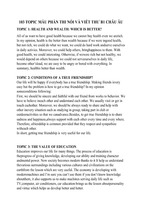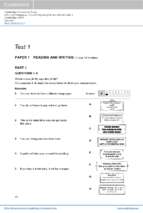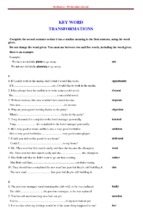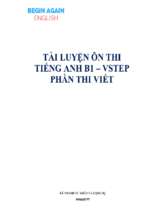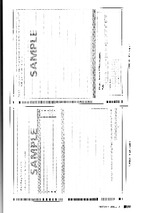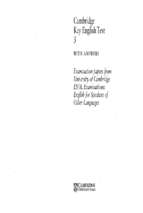VIETNAM NATIONAL UNIVERSITY, HANOI
VIETNAM JAPAN UNIVERSITY
HOANG MINH KIEN
STUDY OF FABRICATION OF PMMA
MICROSPHERES FOR APPLICATIONS
IN LARGE SCALE MANUFACTURING
MASTER'S THESIS
VIETNAM NATIONAL UNIVERSITY, HANOI
VIETNAM JAPAN UNIVERSITY
HOANG MINH KIEN
STUDY OF FABRICATION OF PMMA
MICROSPHERES FOR APPLICATIONS
IN LARGE SCALE MANUFACTURING
MAJOR: NANOTECHNOLOGY
CODE: 8440140.11QTD
RESEARCH SUPERVISOR:
Dr. NGUYEN TRAN THUAT
Dr. PHAM TIEN THANH
Hanoi, 2020
ACKNOWLEDGEMENTS
I would like to express my gratefulness to my first supervisor Dr. Nguyen Tran
Thuat, Nano and Energy Center, Hanoi University of Science, Vietnam National
University, for giving me guidance and help me finalize the thesis. During the
research, I have learned from him the way of processing results after each
experiment and important skills when working in scientific field.
I would like express my gratitude to my second supervisor Dr. Pham Tien Thanh,
Vietnam Japan University, for giving me support and encouragement. His ideas and
suggestions were useful for not only my current but also future work.
I also would like to show my appreciation to MK Group for the fund of the project
for most of the chemicals and equipment.
I would like to sincerely thank Nano and Energy Center for providing me the
working space and allow me to use their equipment for my research.
I would like to thank my project group members Nguyen Ngoc Anh, Bui Thi Nga
and Chu Hong Hanh for all the assistance and help me accomplish these results. I
learned a lot from working with them, especially how to work in a team and discuss
with others to advance the work.
Finally, I am deeply grateful for the knowledge, the encouragement and support
from lecturers and my friends from Vietnam Japan University. It has been two
meaningful years of studying, training myself and working in this Master program. I
will bring all these experiences with me and utilize them for my career in the future.
TABLE OF CONTENTS
Page
1. INTRODUCTION ..................................................................................... 1
1.1.
1.2.
1.2.1.
1.2.2.
1.3.
1.3.1.
1.3.2.
1.3.3.
1.3.4.
1.3.5.
1.3.6.
Poly(methyl methacrylate) microspheres and anisotropic conductive films 1
Aim of work.................................................................................................. 3
Particles quality requirement ........................................................................4
Large scale manufacturing ............................................................................4
Poly(methyl methacrylate) fabrication ......................................................... 5
Polymerization ............................................................................................... 5
Dispersion polymerization .............................................................................7
Suspension polymerization ............................................................................8
Microwave-assisted polymerization ............................................................ 10
Seeded polymerization .................................................................................10
Polymerization using microfluidic system ...................................................11
2. EXPERIMENTS ...................................................................................... 15
2.1.
2.2.
2.2.1.
2.2.2.
2.3.
Dispersion polymerization .......................................................................... 15
Suspension polymerization ......................................................................... 16
Conventional heating polymerization..........................................................16
Microwave-assisted polymerization ............................................................ 16
Seeded polymerization ............................................................................... 17
3. RESULTS AND DISCUSSION .............................................................. 18
3.1.
3.1.1.
3.1.2.
3.1.3.
3.2.
3.2.1.
3.2.2.
3.3.
3.4.
3.4.1.
3.4.2.
Dispersion polymerization .......................................................................... 18
250-ml reaction container ...........................................................................18
500-ml reaction container ...........................................................................21
2000-ml reaction container .........................................................................24
Suspension polymerization ......................................................................... 29
Conventional heating polymerization..........................................................29
Microwave-assisted polymerization ............................................................ 30
Seeded polymerization ............................................................................... 32
ACF demonstration..................................................................................... 34
Silver-plating of PMMA...............................................................................34
ACF Fabrication..........................................................................................36
4. CONCLUSION ........................................................................................ 39
REFERENCES ............................................................................................... 40
LIST OF ABBREVIATIONS
ACF
Anisotropic Conductive Film
BPO
Benzoyl peroxide
DI
Deionized
ICC
Integrated Circuit Card
MeOH
Methanol
MMA
Methyl methacrylate
PCB
Printed Circuit Board
PMMA
Poly (methyl methacrylate)
PVA
Polyvinyl alcohol
PVP
Polyvinylpyrollidone
RPM
Round per Minute
RT
Room Temperature
SEM
Scanning Electron Microscope
LIST OF TABLES
Page
Table 3.1. Reaction conditions for studying effect of MMA on PMMA products
using 250-ml reaction container ............................................................................... 18
Table 3.2. Reaction conditions for studying effect of BPO on PMMA products
using 250-ml reaction container ............................................................................... 20
Table 3.3. Reaction conditions for studying effect of BPO on PMMA products
using 500-ml reaction container ............................................................................... 21
Table 3.4. Reaction conditions for studying effect of MMA on PMMA products
using 500-ml reaction container ............................................................................... 21
Table 3.5. Reaction conditions for studying effect of MMA on PMMA products
using 2000-ml reaction container ............................................................................. 24
Table 3.6. Polymerization efficiency when varying the monomer amount ............. 25
Table 3.7. Reaction conditions for studying effect of BPO on PMMA products
using 2000-ml reaction container ............................................................................. 27
Table 3.8. Reaction conditions for suspension polymerization ............................... 29
Table 3.9. Reaction condition for microwave-assisted suspension polymerization 30
Table 3.10. Reaction condition for seeded polymerization ..................................... 32
Table 3.11. Electrical resistance results of conductive sample ................................ 36
Table 3.12. Electrical resistance result of the fabricated ACF ................................ 38
LIST OF FIGURES
Page
Figure 1.1. Particles comparison of a) PMMA; b) PS products sharing the same
polymerization process (solvent, initiator and surfactant) ......................................... 2
Figure 1.2. Bonding mechanism of a conventional ACF ........................................... 2
Figure 1.3. a) Model for bonding a flip chip and a substrate in a smart card; b)
Schematic for connection between bumps of integrated circuit chip and terminals of
a glass substrate formed by an ACF ........................................................................... 4
Figure 1.4. Three main steps in polymerization A: Initiation, B: Propagation, C:
Termination ................................................................................................................ 6
Figure 1.5. Particle size ranges of different polymerization methods ....................... 7
Figure 1.6. Schematic for dispersion polymer mechanism ........................................ 8
Figure 1.7. Schematic for suspension polymer mechanism ....................................... 9
Figure 1.8. Schematic for seeded polymerization process ....................................... 11
Figure 1.9. Schematic of the channel layouts .......................................................... 12
Figure 1.10. Patterns of droplet formation observed in the T-junction/pocket. ....... 13
Figure 1.11. Microwave heating and conventional heating integrated microfluidic
systems. .................................................................................................................... 13
Figure 2.1. Apparatus for 250-ml and 500-ml Reaction Containers a) Schematic; b)
Real system for 500-ml Reaction Container ............................................................ 15
Figure 2.2. Apparatus for 2000-ml Reaction a) Schematic; b) Real system............ 15
Figure 2.3. Apparatus for microwave-assisted polymerization a) Schematic; b) Real
system ....................................................................................................................... 17
Figure 2.4. Schematic of apparatus for seeded polymerization ............................... 17
Figure 3.1. Microscopic images of samples a) A% MMA; b) 1.3A% MMA and c)
1.5A% MMA............................................................................................................ 19
Figure 3.2. Microscopic images of damples a) B% BPO; b) 1.3B% BPO .............. 20
Figure 3.3. Microscopic images of samples a) 1.3B% BPO; b) 2B% BPO and 3B%
BPO .......................................................................................................................... 22
Figure 3.4. Microscopic images of samples a) 0.5A% MMA; b) 0.8A% MMA and
c) A% MMA ............................................................................................................ 23
Figure 3.5. Microscopic image of the sample A% MMA and 2B% BPO ............... 25
Figure 3.6. Microscopic images of samples a) 1.1A% MMA; b) 1.3A% MMA and
c) 1.5A% MMA ....................................................................................................... 26
Figure 3.7. Microscopic images of samples a) 2B% BPO; b) 1.7B% BPO; c) 2.3B%
BPO and d) 2.7B% BPO .......................................................................................... 28
Figure 3.8. Microscopic images of samples a) A% MMA; b) 0.3A% MMA.......... 30
Figure 3.9. Microscopic images of microwave-assisted polymerization samples after
a) 2 h of reaction; b) 3 h of reaction ......................................................................... 31
Figure 3.10. Microscopic images of conventional heating polymerization samples
after a) 2 h of reaction; b) 3 h of reaction ................................................................ 32
Figure 3.11. a) Microscopic image of PMMA seeding particles; b) Microscopic
image of products after 60 min; c) Microscopic image of products after 100 min . 33
Figure 3.12. Sample fabricated using 2000-ml reaction container, with MMA% =
1.1A% and BPO = 2B % a) optical microscopic image and b) SEM image ........... 34
Figure 3.13. Silver-plated PMMA particles a) optical microscopic image; b) SEM
image ........................................................................................................................ 35
Figure 3.14. Schematic for electrical resistance measurement system .................... 36
Figure 3.15. Optical microscope of anisotropic conductive films after fabrication
using conductive silver-plated PMMA microspherical particles ............................. 37
Figure 3.16. Schematic for measuring anisotropic conductivity of fabricated ACFs
.................................................................................................................................. 38
ABSTRACT
Monodispersed poly(methyl methacrylate) microspheres with the size from 5 µm to
13 µm were prepared by using a dispersion polymerization method. Three reaction
containers with volume of 250 ml; 500 ml and 2000 ml were used to study the
scalability of the fabrication process. In the case of 2000-ml reaction container,
more than 80 g of microspheres were synthesized with high efficiency, which could
be utilized for the fabrication of more than 100 m2 of anisotropic conductive film.
The products were proved to have a good quality and to be ready for carrying
forward to the silver-plating process and the fabrication of anisotropic conductive
films. Other two methods including microwave-assisted polymerization and seeded
polymerization were also performed to decrease the reaction time and to increase
particles size. However, the two methods still need more optimization to yield better
quality
of
products
and
efficiency
of
process.
1.
INTRODUCTION
1.1. Poly(methyl methacrylate) microspheres and anisotropic conductive
films
Polymers extracted from nature in the early days were already utilized in the
production of clothing, buildings and daily equipment. However, only since the
revolution of synthetic polymers in the first half of 20th century - the period which
can be known as the age of polymers, this material had attracted great deal of
attention and had been developed rapidly due to their surprisingly low density, high
tensile strength and good flexibility. During this time, especially from 1930 to 1960,
almost all the polymers we commonly use today had been discovered, for example,
Polyethylene terephthalate (PET) for plastic bottles; Polyvinylchloride (PVC) for
pipes or waterproof clothing; and Poly(methyl methacrylate) (PMMA) used for
transparent container such as acrylic glass for aquarium1. Initially, polymers were
developed for the use of macroscale manufacturing such as clothing, transportation
or food preservation. With the growth of microtechnology, polymer microparticles
have attracted huge attention due to their flexibility, spherical shape and low-cost
production. Among the types of polymer particles, PMMA and Polystyrene (PS)
microspheres are the most popular. The chemicals used for the production of these
two polymers are cheap and commercially available as well as the polymerization
yields high efficiency. Comparing PMMA with PS, the particles size overall for PS
is smaller, mostly smaller than 5 µm, while size of PMMA can vary from
submicron size to hundreds of micro in diameter. Figure 1.1 compares the particles
fabricated by polymerization of PMMA and PS using the same reaction condition,
size of PMMA microspheres is significantly larger than size of PS microspheres.
PMMA can yields larger particles size of 8 µm, and even larger than 10 µm with
some modification. In contrary, for PS polymerization, large particles of 7 or 8 µm
can be hardly obtained, even with modified conditions to increase the particles
radius. PMMA can be observed to be more flexible in terms of creating polymer
particles having micro size, indeed, PMMA particles can as large as 100 µm.
1
Therefore, for the purpose of providing the polymer microspheres for the use of
most of current technology, PMMA is chosen to be the main material.
Figure 1.1. Particles comparison of a) PMMA; b) PS products sharing the same
polymerization process (solvent, initiator and surfactant)
One of the main reason making PMMA microspheres attracting great attention is
that the surface of PMMA particles can be easily modified using chemical process.
Acrolein was used by Songjun Li for the modification of PMMA surface during the
polymerization for the investigation on the polymer immobilization2. With the
existence of ester group having Oxygen carrying negative charge from free electron
pair, the surface of PMMA particles can also be modified with metal cation, for
instance, stannous (II) cation can be absorbed on the PMMA surface in the
pretreatment of silver-plating process3. Therefore, PMMA can be used as cores for
the preparation of conductive particles, which is one of the essential part in
anisotropic conductive film (ACF) fabrication process.
Figure 1.2. Bonding mechanism of a conventional ACF4
ACF is used to create a mechanical and electrical connection between components
in electrical device. Figure 1.2, shows the bonding mechanism of an ACF. Heat and
2
compression is used to create connection between electrodes on two opposite
substrates. Upon heating and compression, adhesion is created and mechanically
connect the two substrates. Also, conductive particles inside the ACF contact
respective electrodes and create electrical connection between them. The main
feature of the ACF is that the electricity is allowed only along the vertical direction
(one direction) from an electrode to the respective one, but not along the horizontal
direction. In other word, only the contact between two electrodes is conductive; the
non-contact regions are insulated. Because of this feature, ACFs are commonly
used for the connection of the driver electronics on glass substrate in liquid-crystal
devices and for flex-to-flex or flex-to-board of many electronic devices such as
smartphones or laptops. With the development of technology nowadays, ACFs are
more and more in high demand. Especially for the advances in technology in
Vietnam in this industrial age, the importance for the ACF increases and the
procedure for ACF should be developed to reduce the dependence on foreign
products.
1.2.
Aim of work
Polymer fabrication is the first step of our main project, which is fabrication ACF
for integrated circuit card (ICC). One of the reason why PMMA microspheres is a
good candidate for the making of ACF is due to the glass transition temperature of
the atactic PMMA is 105oC and melting point is 160oC5, which makes the particles
flexible and able to soften during the connection process using heat and pressure
for compression. Furthermore, the surface of PMMA microspheres can be modified
with the use of chemicals absorption, then use reduction oxidation reaction to
perform electroless metal plating on the surface of particles making the particles
conductive. In order for the ACF to work in the best condition, quality of particles
inside the film should be taken into consideration. Moreover, with the purpose for
industrial application, large scale manufacturing of PMMA will be studied in the
main factor of scalability. Figure 1.3 shows the model for the integrated circuit chip
and printed conductor runs on substrate for an ICC and schematic of using ACF for
the connection of these two components.
3
Figure 1.3. a) Model for bonding a flip chip and a substrate in a smart card6; b)
Schematic for connection between bumps of integrated circuit chip and terminals of
a glass substrate formed by an ACF7
1.2.1. Particles quality requirement
The requirement for the PMMA microspheres used for ACF is that the particles
should have spherical shape and the size distribution should be narrow in order to
ensure the contact of most conductive particles to both the chip bump of integrated
circuit chip and terminals of printed conductor wires on a glass substrate. Another
requirement for the particles size is that the particles diameter should be from 5 to
30 µm. The particles should not be smaller than this range in order to prevent the
agglomeration during the film making and ensure the one layer of particles
connecting terminals and chip bumps. Moreover, the size is kept under 30 µm to
match the thickness of ACFs which is from 30 to 40 µm – the best thickness for
good adhesion. Therefore, particles quality, regarding spherical shape and size, was
investigated in the research.
Concerning the synthesis of microspherical polymer particles, four common
methods are often applied, which are emulsion, dispersion, suspension and
precipitation polymerization. These methods are presented in details in the next
section. For each desired size of particles, polymerization methods are chosen. In
our research, desired range size of particles is from 5 to 30 µm.
1.2.2. Large scale manufacturing
In terms of the PMMA microspheres fabrication using for large scale
manufacturing, another main factor studied in the research is the scalability. For
example, in order to produce 1 roll (or 1 tape) of ACF with 100 m in length and 10
mm in width, or 1 m2 of film, 0.6 g of PMMA is needed. For the creation of one
4
ICC, 10mmx10mm of ACF is used, hence, 1 tape of ACF can make the connection
of 10,000 cards. Imagine if we can produce 60 g or 600 g of PMMA per day, 100
tapes or 1000 tapes can be fabricated, which can be used for 1 million or 10
millions of ICCs. This number can be considered as large scale manufacturing, and
the goal of our research is to prove the polymer synthesis method not only able to
reach this amount but also has the potential to produce more for other industrial
purpose.
1.3.
Poly(methyl methacrylate) fabrication
1.3.1. Polymerization
In general, the polymerization undergoes three main steps: initiation, propagation
and termination. Figure 1.4 illustrates the mechanism for all of these three steps. In
the initiation process, energy is provided for the initiator to break their weakest
bond and radicals are formed. Some of the common initiators are Benzoyl Peroxide
(BPO) and Potassium persulphate (KPS), which the weak peroxide O-O bonds are
broken to form oxygen radicals, or azobisisobutyronitrile (AIBN), which the C-N
bonds are broken to form nitrogen and carbon radicals. Depend on the type of
polymerization and solvent used, proper initiator is chosen. After the radical is
formed by bond-breaking of initiator, the radical will attach to the monomer mostly
by breaking the weak double bond to create a new bond and a new radical. Then
the second step is the propagation, where this new radical attaches to another
monomer to form a longer free radical molecule. This molecule undergoes the same
process, and the chain reaction continues until two radicals interact (hydrogen
transferring) together (recombination) to eliminate the free radical, in the final step
of termination.
5
Figure 1.4. Three main steps in polymerization A: Initiation, B: Propagation, C:
Termination
There are four common techniques employed for the manufacturing of polymer,
which are emulsion polymerization, dispersion polymerization, precipitation
polymerization and suspension polymerization. The main factors that distinguished
the polymerization method are the initial state of polymerization mixture (regarding
the solubility of initiator and monomer in solvent); kinetics of polymerization;
mechanism of particles formation and shape/size of final particles. Figure 1.5
shows the particle size range for each type of polymerization method. For emulsion
polymerization, the synthesized particles are mostly spherical and have a small size
varying from 50 nm to 500 nm. Meanwhile, particles having size ranging from 500
nm to 15 µm can be prepared by dispersion and precipitation polymerization.
However, comparing these two techniques, dispersion polymerization yields
monodispersed and spherical polymer particles while particles prepared by
precipitation method are mostly polydispersed as well as have irregular shape.
Regarding suspension polymerization, spherical particles with size larger than 15
µm and up to 1 mm can be fabricated; however, the monodispersity is difficult to
achieve. By the resulted particles for each technique, we choose dispersion and
6
suspension polymerization to be two main techniques for our PMMA microspheres
fabrication.
Figure 1.5. Particle size ranges of different polymerization methods8
1.3.2. Dispersion polymerization
Figure 1.6 shows the schematic for dispersion polymerization mechanism. In
dispersion polymerization, during the initial state, the reaction mixture is
homogenous where the monomer and the initiator both dissolve in the
polymerization solvent. During propagation step, macroradicals or oligomers are
formed, to a critical point the molecules are insoluble in the solvent and hence,
phase separation occurs (Figure 1.6B). These macroradicals then gather for the
nucleation to form primary particle, and the polymerization continues within
individual particles (Figure 1.6C). Then, the particles grow until reaching
stabilization (Figure 1.6D).
Dispersion polymerization of PMMA were already reported in past literature.
Effect of reaction temperature, initiator concentration and type, monomer
concentration and stabilizer were studied by S.Shen. Conditions for synthesize
particles with narrow size distribution ranging from 0.4 µm to 10 µm were
illustrated9. However, for the large scale production or industrial manufacturing, no
7
process has been published for fabrication of microspherical particles and with the
development of microtechnology and nanotechnology, the demand for these
polymers grew and grew. In our research, we will prove whether the procedure is
applicable for large scale production purpose.
Figure 1.6. Schematic for dispersion polymer mechanism A: initial step, B:
formation of macroradicals – phase transition, C: Nucleation process and particles
growth, D: particles reach stabilization8
1.3.3. Suspension polymerization
In suspension polymerization, the initiator is soluble in the monomer, however,
both of them are insoluble in the polymerization medium. Figure 1.7 illustrates the
mechanism for suspension polymerization. When the monomer and the initiator are
mixed in the solvent, mini droplets of monomer are formed upon high speed of
stirring. When energy is provided for the initiation, polymerization occurs within
each individual droplets. Instead of continue growing until reaching stabilization
like dispersion polymerization, the droplet will directly turned into the polymer
particles when finishing polymerization. Therefore, to control the size of particles,
size of droplets should be considered.
8
Figure 1.7. Schematic for suspension polymer mechanism
In order to control the size of droplets, according to Equation 1, stirring speed, and
volume ratio of monomer to liquid matrix, viscosity of the two phases and
concentration of stabilizer should be taken in consideration.8
̅
where ̅ is average particle size, k includes parameters related to the reaction vessel
design, Dv is the reaction vessel diameter, Ds is the diameter of the stirrer, R is the
volume ratio of the droplet phase to medium, N is the stirring speed, νm and νd are
the viscosity of the monomer phase and liquid matrix respectively, ε is the
interfacial tension of the two phases, and Cs is the concentration of stabilizer.
Even though the suspension polymerization can produce a wide range size of
particles, the narrow size distribution is quite difficult to achieve due to the
versatile of polymer droplets, where the droplets can easily be agglomerated or
separated during polymerization. The most common way to control the size is to
increase the speed of stirring, which is the most efficient to ensure stabilized state
of droplets. Moreover, the apparatus design and reaction vessel diameter is one of
the main factor decides the size of particles according to Equation 1. Therefore,
changing, for instance, small reaction chamber to lager reaction chamber, new
conditions for reaction should be re-optimized, which makes the process not
flexible.
9
1.3.4. Microwave-assisted polymerization
Regarding normal polymerization using heat transfer from a heat source, the time
for the reaction varies from 24 to 48 h, which requires resources to maintain the
reaction and quite time consuming. Therefore, many studies were carried out with
the goal of reducing the time of polymerization, which includes the use of
microwave. J. Jacob had used microwave with different power of 500 W; 300 W
and 200 W for the polymerization of MMA and obtained the reaction rate enhance
comparing to the thermal method which are 275%; 200% and 138%, respectively10.
Not only the reaction rate is faster, but the conversion of polymer using microwaveassisted process was higher than conventional heating, which has been studied by
Liu Z. in the polymerization of butyl acrylate (BA) to PBA11. The mechanism of
microwave on the acceleration of reaction has not yet been demonstrated, but two
effects of microwave irradiation have been proposed: specific microwave heat and
nonthermal microwave effect12. When using normal conventional heating, the heat
transfers from outside to inside solution, and the hottest part is the glass container
directly contacting the heat source. Meanwhile, the microwave can pass through
every part of reaction mixture including solvent, surfactant, monomer and initiator,
allow heat to be generated across the entire reaction volume and most part of the
reaction will reach reaction point much faster. Regarding nonthermal process,
intermediate can absorb the microwave energy and be accelerated or some
molecule under microwave can be enhanced from ground state to transition state
and be more active. However, when nonthermal microwave effects are discussed,
they are generally invoked as the inaccuracy in comparison with conventional
heating effects12.
1.3.5. Seeded polymerization
It is not easy to synthesize particles larger than 15 µm with narrow size distribution
via one-step classic dispersion or suspension polymerization. One of the techniques
can be used to increase the size of particles while still keeping the monodispersity
is seeded polymerization. Miliang Ma already succeeded in forming 14 µm
monodispersed cross-linked P(GMA-St-EGDMA) from monodispersed 7 µm
P(GMA-St) as seed particles13. For seeded polymerization, the most important
10
process is the swelling process of seed particles in monomers. Figure 1.8 shows the
phenomena occur during seeded polymerization process. When polymer particles
contact with monomer in the solution, the monomer concentration is not high for
dissolving the polymer, but the monomer still affect the polymer, surround the
polymer and make the polymer particle become larger. We call this phenomenon
the swollen effect. When the swollen particles reach the point of stabilization,
energy was provided for the initiator in the solution to initiate the polymerization of
monomer and the monomer will form the new polymer shell outside the seed
particles, hence, results in larger size particles. In seeded polymerization,
polymerization condition such as the amount of seed particles or swollen time
should be carefully controlled in order to stop the formation of new particles.
Figure 1.8. Schematic for seeded polymerization process
1.3.6. Polymerization using microfluidic system
When using classical polymerization, mostly, the monodispersity is obtained for
synthesis of particles smaller than 15 µm. For larger size of monodispersed particle,
as mention before, seeded polymerization can be used; however, the process is
quite complicated as it is a multiple steps method which requires the first step to be
the fabrication of seed particles. With the development of microfluidic systems, one
step polymerization for these large particles is attainable as the system allow
organic droplets with same size formed continuously in the flow of aqueous phase.
Monodispersed particles of poly(1,6-hexanediol diacrylate) with mean diameter
around 43 µm was made by Takashi Nishisako with the use of T-shape channel for
feeding in microfluidic system14 (Figure 1.9). In Takashi research, feed rate of
11
- Xem thêm -


